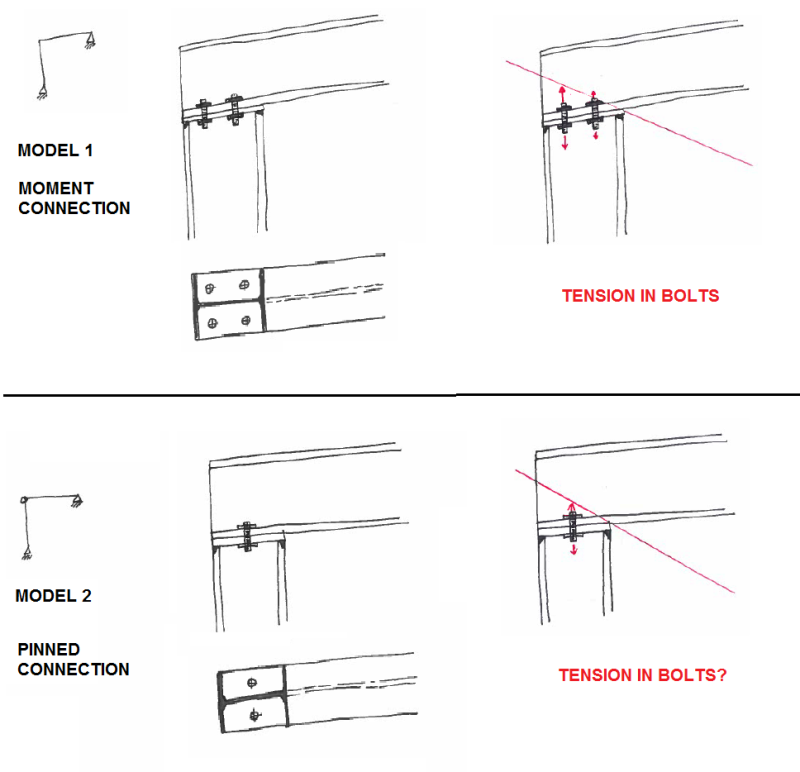mats12
Geotechnical
- Dec 17, 2016
- 181
I was inspired for this from looking at other thread.
Im really confused as far as steel connection goes and how is it considered for design/in the model.

MODEL 1: I understand this is a moment connection between a column and a beam. Since there is a moment, we have tension force in bolts.
MODEL 2: this is supposed to be a pinned connection? Is there any tension in bolts there since there are no moment? I mean there will still be a rotation around columns flange that wants to tear a bolt apart, isnt it?
Any ebook, article about things like this, from where Id be able to learn?
regards
Im really confused as far as steel connection goes and how is it considered for design/in the model.

MODEL 1: I understand this is a moment connection between a column and a beam. Since there is a moment, we have tension force in bolts.
MODEL 2: this is supposed to be a pinned connection? Is there any tension in bolts there since there are no moment? I mean there will still be a rotation around columns flange that wants to tear a bolt apart, isnt it?
Any ebook, article about things like this, from where Id be able to learn?
regards

